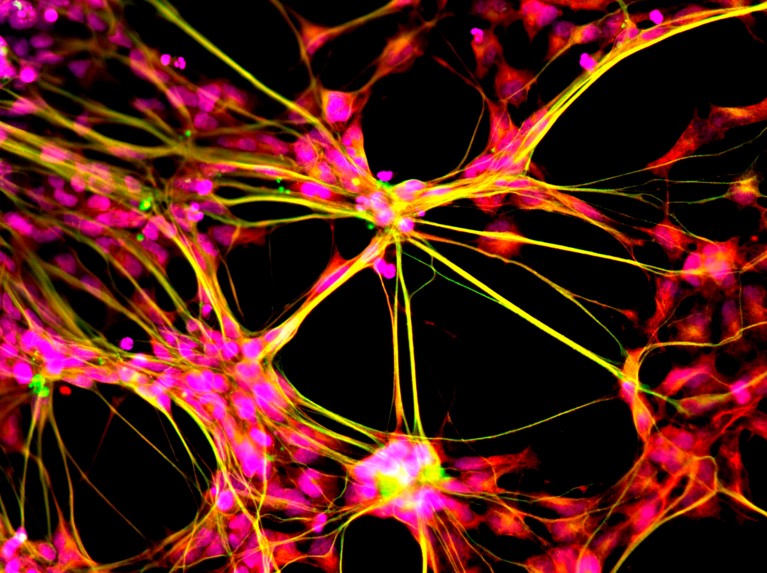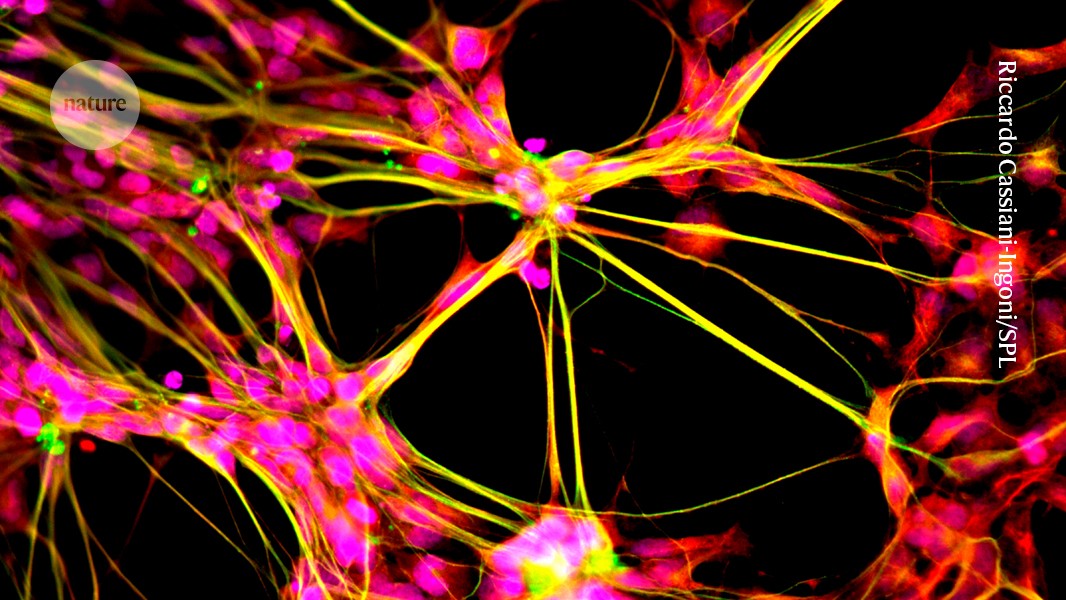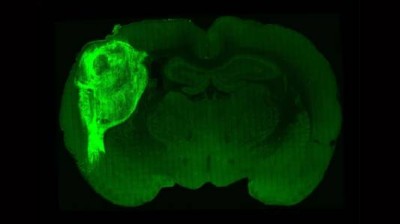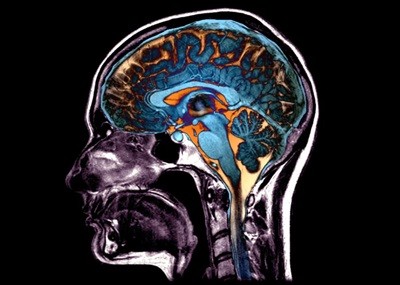
Brain stem cells (artificially coloured) give rise to neurons in young individuals, but that ability fades with advancing age.Credit: Riccardo Cassiani-Ingoni/Science Photo Library
Clues to keeping the brain’s regenerative cells youthful and energetic into old age have emerged by applying CRISPR gene editing to mice1.
Age impedes the ability of the brain’s stem cells to churn out new cells, but the study’s authors found that reducing the activity of a particular gene rejuvenated these stem cells, allowing them to proliferate and provide the brain with a supply of fresh neurons.
That gene regulates stem cells’ consumption of glucose, a sugar that is key to cellular metabolism. The results in mice fit well with an emerging picture from studies of postmortem human brains. These efforts, too, have found that age affects metabolism in the brain, says Maura Boldrini, a neuroscientist and psychiatrist at Columbia University Irving Medical Center in New York City who was not involved in the latest research. “Probably their metabolism is less efficient than it used to be,” she says, adding that both the human results and the mouse study, published today in Nature, “open new avenues for potential therapeutics.”
A youthful brain
The role of neural stem cells in the adult human brain has been controversial. Boldrini and others have published evidence that new neurons are made in the hippocampus, a region of the brain that is important for learning and memory, at least until the age of 792. Her team is now looking to see whether production of new neurons is altered in people with Alzheimer’s disease or psychiatric illnesses. But some researchers have reported that they could not find evidence that adults make new neurons in the hippocampus. “This controversy is still continuing,” Boldrini says.
Human brain cells implanted in rats prompt excitement — and concern
In mice, the picture is clearer. Neural stem cells in a region of the brain called the subventricular zone can give rise to neurons and other types of cells. These young cells then migrate to the olfactory bulb, which controls the sense of smell. A steady supply of fresh neurons to the olfactory bulb makes sense in mice, because they rely heavily on smell to perceive changes in their environment, says Anne Brunet, a geneticist who studies ageing at Stanford University in California and who is an author of the new study.
As mice age, however, those stem cells become less active. Brunet and her colleagues decided to find out why. The team used CRISPR-Cas9 genome editing to systematically disrupt 23,000 genes, and then tested the effect of each disrupted gene on neural stem cells that had been taken from young and old mice and grown in the laboratory.
Neuronal boost
The screen yielded 300 genes that might play a part in neural stem-cell ageing. The researchers further narrowed the pool by using CRISPR-Cas9 to disrupt some of these genes in cells in the subventricular zone of living young and old mice. The authors then checked the animals’ olfactory bulbs and identified a select group of key genes. Disruption of these genes boosted stem cells’ production of neurons in the old animals — but did not affect stem cells in young animals.
Five ways the brain can age: 50,000 scans reveal possible patterns of damage
One such gene, called Slc2a4, codes for a protein that imports glucose into cells. Disrupting it reduced cells’ glucose intake and increased their power to proliferate.
That result meshes with previous studies that have found a link between sugar metabolism and ageing, says Saul Villeda, a neuroscientist at the University of California, San Francisco. For example, researchers recently reported that a diabetes drug can stave off age-related cognitive decline in monkeys. But the latest finding is particularly important, he says, because it points to a specific protein that has a key role and could be targeted in future studies.
Even if the role of neural stem cells in adult humans is in question, the results provide crucial information for the design of cell therapies that might one day treat neurodegenerative conditions, Villeda says.




